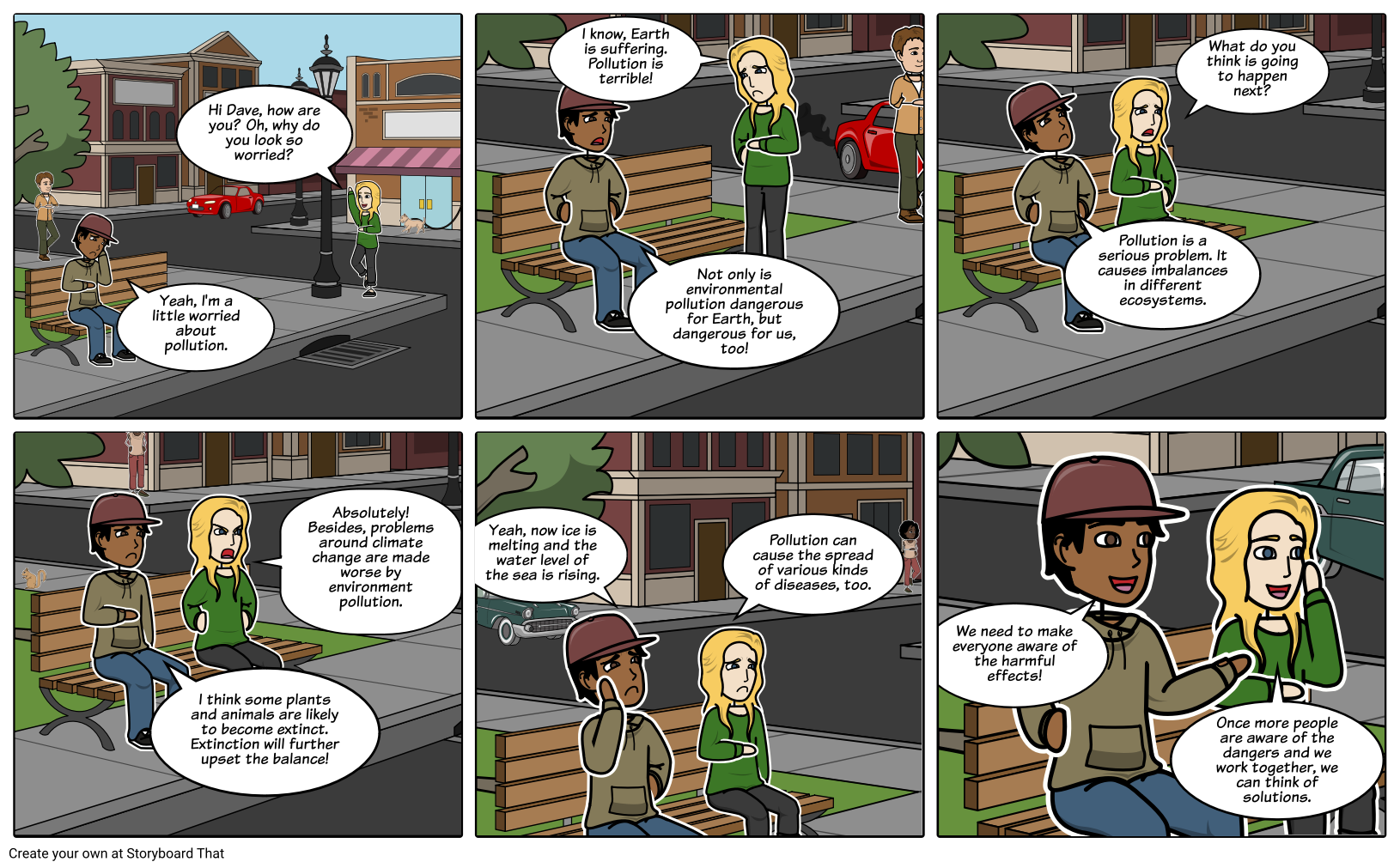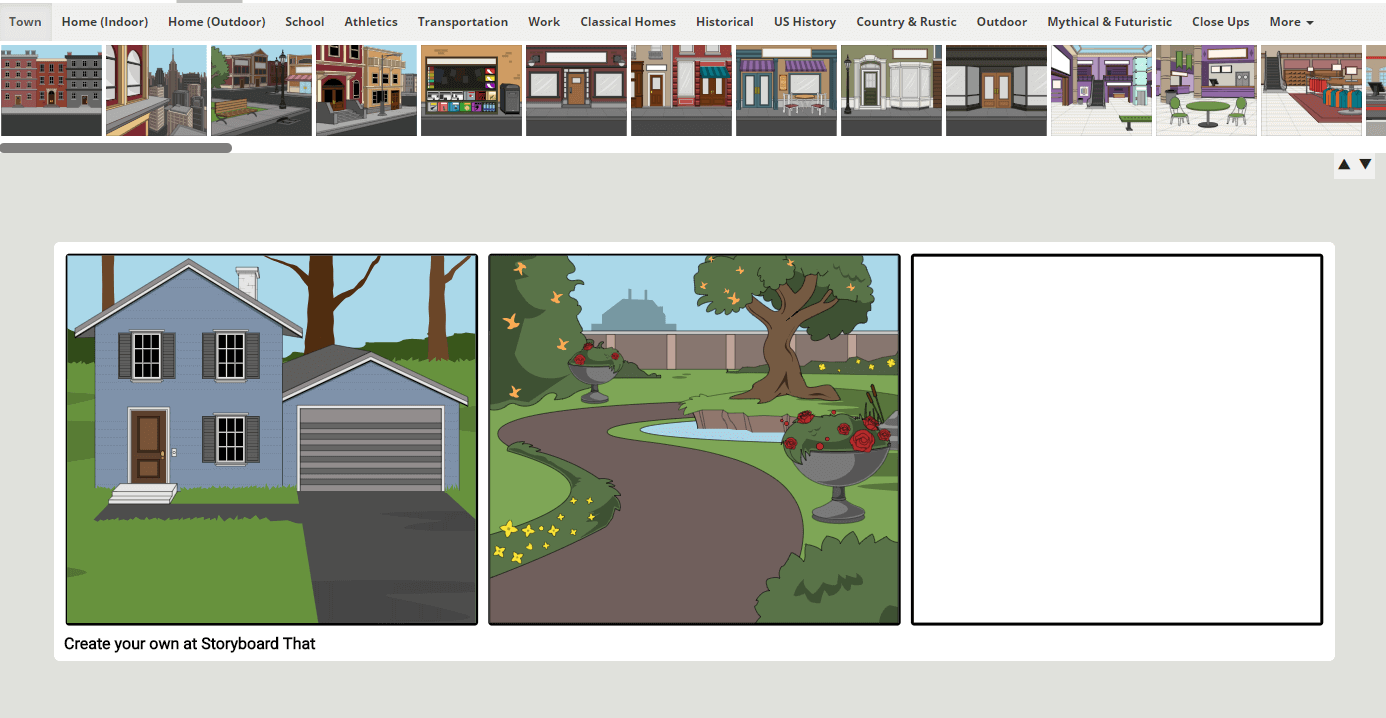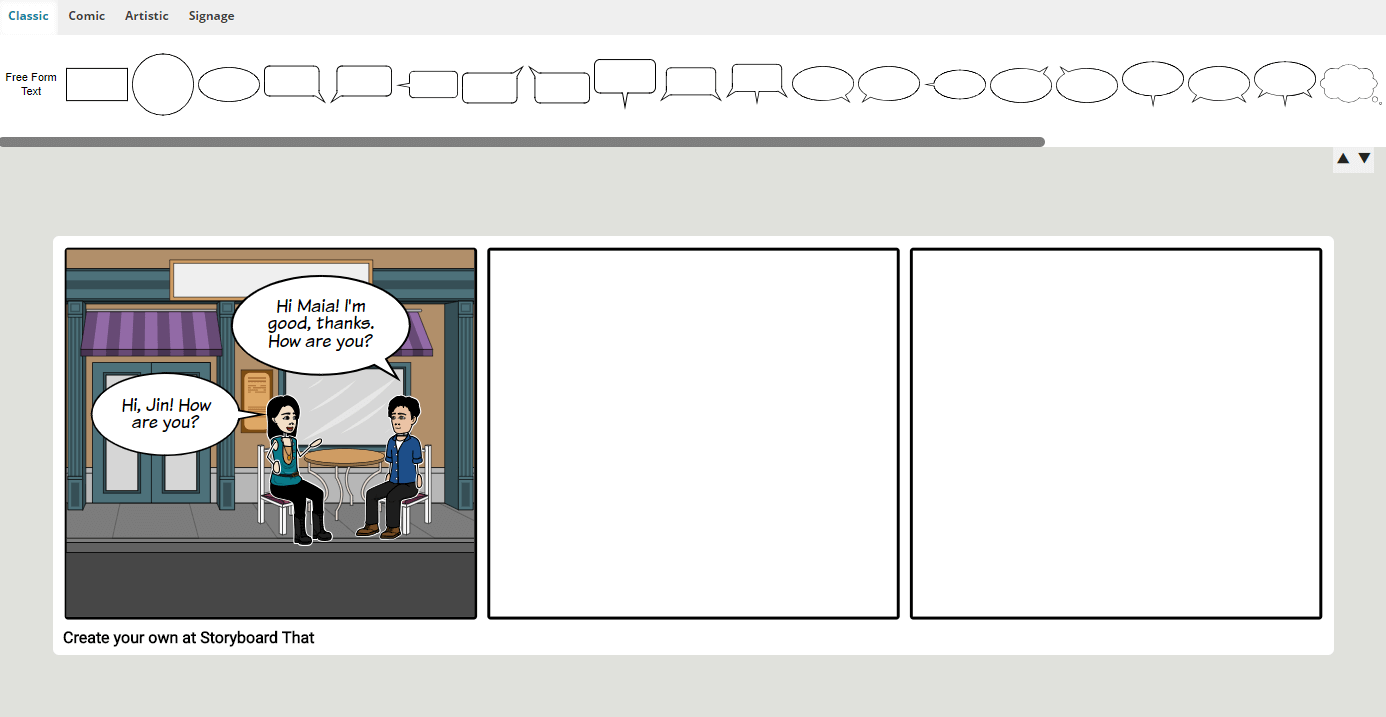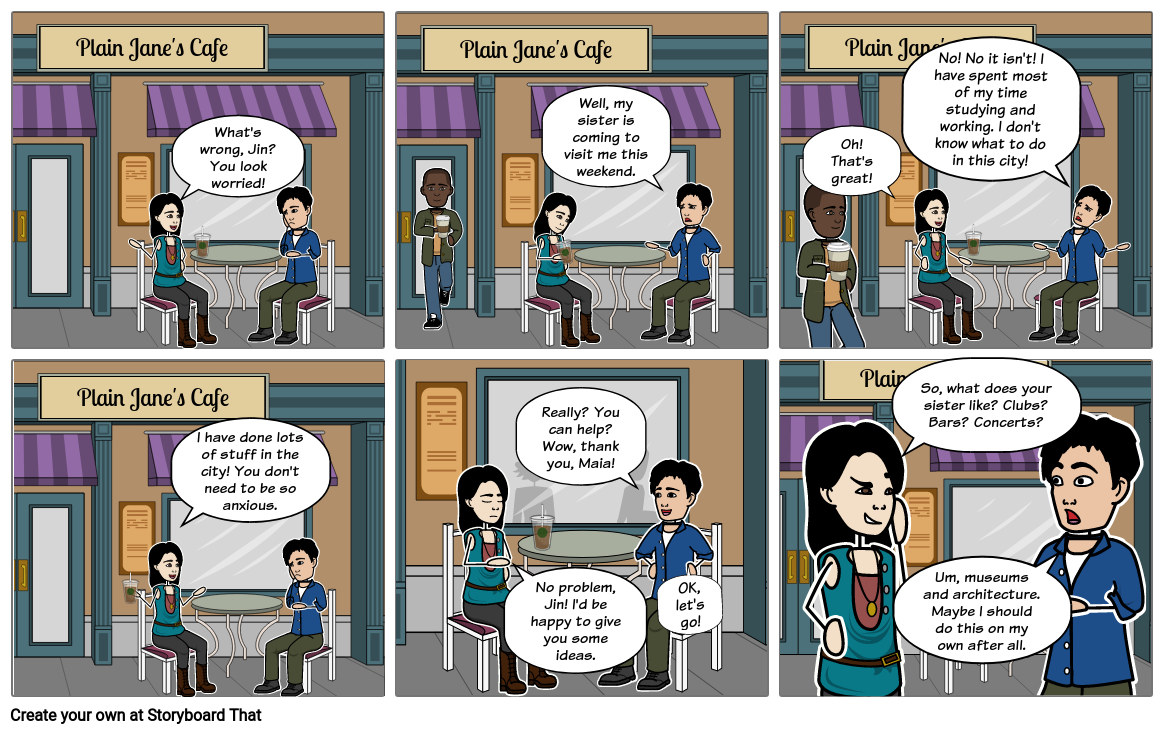Example Of Dialogue Writing Between Two Friends
Conversational English can be very difficult. While knowing proper sentence structure and correct grammar is extremely important, conversational English is how you will interact with other English speakers on a daily basis. If you don't feel ready to hold a conversation in English, or if you want more practice, write a dialogue!
Imagining a situation where two friends would be talking about something can be challenging. Conversational English is very different from English you would use for a written assignment, or from English you would read in a book or on a news website. However, you normally go through the same motions when completing a written assignment that involves answering an essay question, and a written assignment that asks you to create a dialogue between two people.
Creating a Dialogue
Storyboard That gives you the opportunity to create visual scenarios in order to create more natural conversations. Instead of writing out the dialogue as lines of text, try to understand the context of the dialogue. There are a lot of nuances that come up in conversation that do not always appear in written communication, such as slang, colloquial expressions, interjections, immediate responses, interruptions, and more.

How to Create a Dialogue on Storyboard That
Choose a Scene or Situation.
Open up the Storyboard Creator and you will see three empty cells. Look through the different scene options and try out different locations. Choose one that you like. Click on the scene and drag it to the empty cell. The scene may dictate the situation or conversation, so be creative!

Choose Characters.
You need at least two people to talk to each other in a dialogue. Storyboard That has many fun characters to choose from. Characters can be modern people, historical figures, animals, monsters, silhouettes, and more!

Give your characters names. If you are going to have a detailed dialogue, you can think about personality traits or opinions, too!
Choose a Dialogue Topic.
People talk about everything, so you can make a storyboard dialogue about anything! Here are some common things people talk about.
- Decisions
- Social Plans
- Current Events
- Weather
- Environment
- Shopping
- Hobbies
- Relationships
- Books, Movies, and Other Media
- School, Jobs, and Future Plans
- Opinions/Concerns on an Issue
When choosing a topic, think about relevant vocabulary that you want to include. If you find yourself struggling with the vocabulary, don't worry! Select a different topic or ask for help from a teacher or native speaker. This exercise can be completed more than one time, so there's plenty of opportunity to practice new dialogues and vocabulary.
Start a Conversation!
Once you have your topic, characters, and setting, you can start writing that dialogue! Use the speech bubbles located in the Textables section. For conversations, speech bubbles are really important. Like the characters and many of the scenes, you can change the appearance of the speech bubbles.

Write the dialogue in order. Use a separate speech bubble each time a character speaks. Don't try to make each sentence perfect yet, instead, focus on what the characters would say and how they might respond to each other. When using storyboards to show dialogue, do not put too much text into a single cell because you do not want the cell to be crowded.
Try to include some of the following in your dialogue.
- Greetings and pleasantries
- Expressions, idioms, slang terms
- Incomplete sentences or short responses
- Interjections, sounds of thinking, filler words
- Farewells
Remember that conversations are more than just words! There are reactions, emotional changes, actions, and more to think about in actual speech. You can pose and edit the characters too, so make sure to use facial expressions and arm motions, if needed.
After you have the basic conversation, go back and check your grammar, expressions, and vocabulary. Did you get most of it right the first time? It's OK if you didn't, that just means you need more practice. As you practice, the right conjugations and vocabulary will come to you more easily!
Here is an example of a finished dialogue between two friends.

Storyboard Dialogue Text
Maia: What's wrong, Jin? You look worried!
Jin: Well, my sister is coming to visit me this weekend.
Maia: Oh! That's great!
Jin: No! No it isn't! I have spent most of my time studying and working. I don't know what to do in this city!
Maia:I have done lots of stuff in the city! You don't need to be so anxious.
Jin: Really? You can help? Wow, thank you, Maia!
Maia: No problem, Jin! I'd be happy to give you some ideas.
Jin: OK, let's go!
Maia: So, what does your sister like? Clubs? Bars? Concerts?
Jin: Um, museums and architecture. Maybe I should do this on my own after all.
Example Of Dialogue Writing Between Two Friends
Source: https://www.storyboardthat.com/articles/e/dialogue-between-two-friends
Posted by: trujillowito2001.blogspot.com

0 Response to "Example Of Dialogue Writing Between Two Friends"
Post a Comment